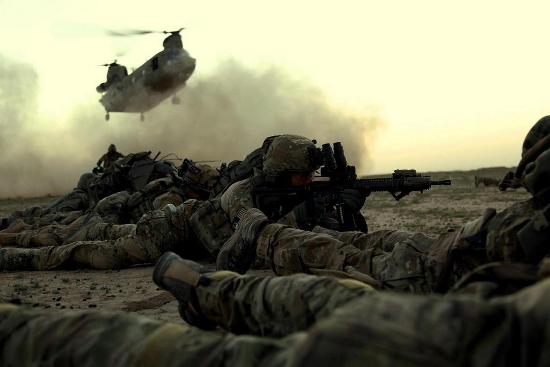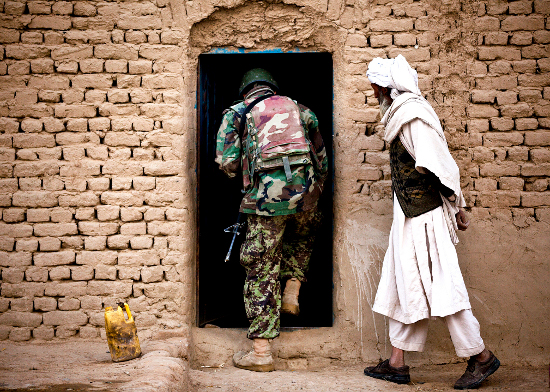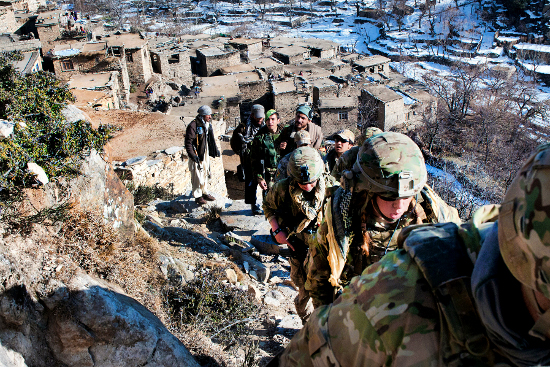By February 19, 2012
The US Army recently announced the next round of unit deployments to Afghanistan. Five brigades and one army headquarters will deploy to Afghanistan between April and August 2012. While deployments are a regular part of normal troop rotations overseas, this deployment differs significantly from previous ones.
- These units will not be assigned to regular combat operations. Their mission is specifically to train and support the Afghan National Security Forces (ANSF).
- In the past, full brigades were deployed, each brigade consisting of about 3,500 troops. This time, less than 300 troops per brigade will be deployed; and the troops deploying will be only the brigade leaders, officers, and senior non-commissioned officers.
- The brigades will be configured to better assist the training and support mission. They will reorganize into small independent teams, each consisting of 18 personnel.
- Overall, five brigades plus an army HQ of officers and NCOs constitutes quite a large training contingent.
 |
| Rangers from 1st Battalion, 75th Ranger Regiment, as part of a combined Afghan and Coalition security force operating in Ghazni province, Afghanistan, await a CH-47 for extraction. Photo by US Army Private First Class Pedro Amador. |
This announcement pertains to US Army units. It is likely that the US Marines, which also has combat troops in Afghanistan, will make a similar announcement.
The new Afghan strategy
This deployment plays an essential part in the new Afghan strategy. The strategy was described in detail in a previous Long War Journal article. In summary, the US plans to draw down its forces by 33,000 (from 100,000 to 67,000 troops) by the end of September 2012, thus ending the surge of US troops that started in late 2009. The goal is to have most US troops out of Afghanistan by the end of 2014. The US plans to end combat operations, however, by late 2013. By then, US forces will transition from the leading fighting force to a training and support force primarily supporting the ANSF. At the same time, the ANSF will take over the lead in combat operations, assuming the main role fighting the country's insurgency. The ANSF goal is to take responsibility for 50 percent of the Afghan population by the end of 2012 and all of Afghanistan by the end of 2014.
Standing up the Afghan National Security Forces (ANSF)
This strategy places a heavy load on the ANSF. Afghan forces will have to take over combat operations very quickly. The ANSF is still an immature force, however, and will need a great deal of training and support during the transition in order to be successful. A problem that has continued to plague efforts to develop the ANSF is the shortage of military trainers in Afghanistan. The deployment of a large number of US trainers this spring is intended to address this issue.
The organization of the US training teams is another important feature of the upcoming deployment. Until recently, the ANSF's primary developmental emphasis has been on growing its size. Training resources have been concentrated in centralized training camps where new ANSF units are recruited and trained. However, the growth of the ANSF will end in September when it reaches its end state goal of 352,000 troops. The training emphasis will then shift from the training camps to supporting the existing units deployed across the country. The large number of US training teams will be dispersed across the country, attachi
ng to individual ANSF units in the field. There they can advise and support the ANSF units in ongoing combat operations.
Specialized US training units
Another interesting feature of this deployment is that two of the units are not regular combat brigades. They are specialized training units deploying overseas for the first time.
- 162nd Infantry Brigade. This training brigade specializes in training foreign security forces combat advisers. Based in Fort Polk, La., it trained the advisers within the combat brigades before they deployed overseas to Iraq and Afghanistan. Now for the first time, the brigade itself is deploying.
- 1st Army Headquarters. This is not a regular combat HQ. It is the headquarters for the army's readiness and training units within the US. Now also for the first time, it will be deploying overseas.
Note that this surge of US trainers to Afghanistan was facilitated by the withdrawal of US forces from Iraq in late 2011. Before being reassigned to Afghanistan, several of the US brigades were either already deployed to Iraq or were planning to deploy there.
 |
An Afghan soldier enters an elder's home while clearing compounds with US Marines during Operation Tageer Shamal in Afghanistan's Helmand province, Jan. 4, 2012. US Marine Corps photo by Corporal Reece Lodder. |
The US has already announced a drawdown of forces from Afghanistan. The surge of trainers is essential for "Part Two" of the Afghan strategy, standing up the ANSF. By the end of 2012, the US will have reduced its combat strength in the country by withdrawing a number of combat troops. At the same time, the intent is to enhance the capability of the ANSF by increasing the number of training and support troops.
Read more: http://www.longwarjournal.org/archives/2012/02/us_announces_a_surge.php#ixzz1nEDsQl2m


No comments:
Post a Comment